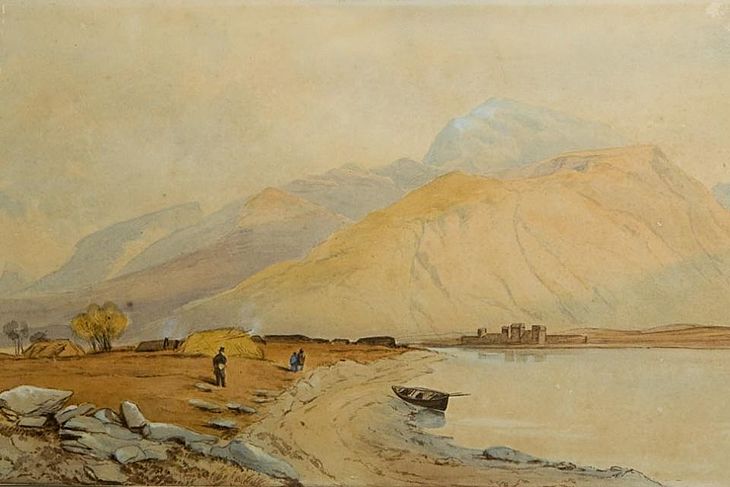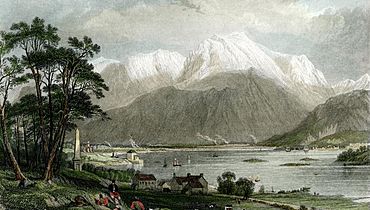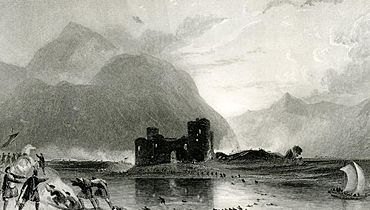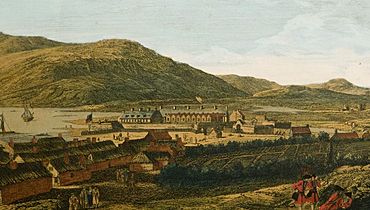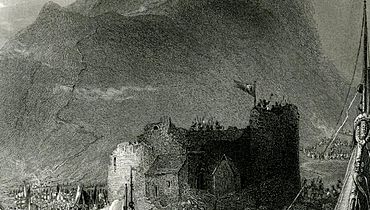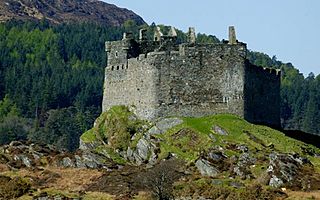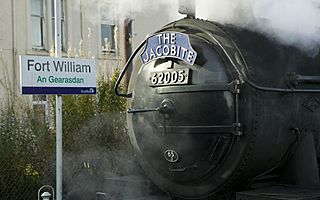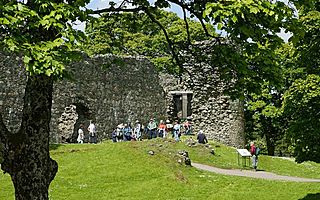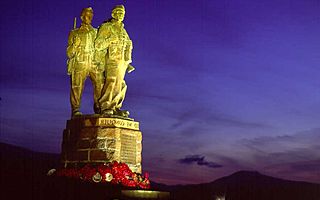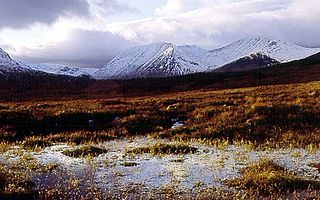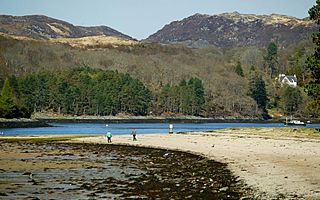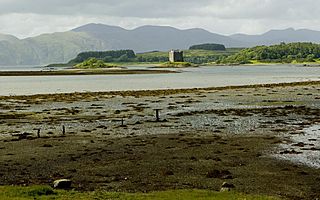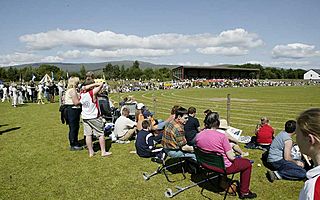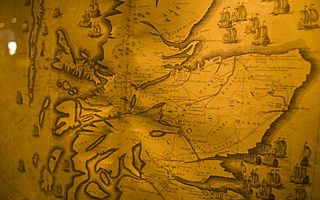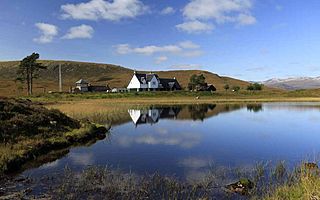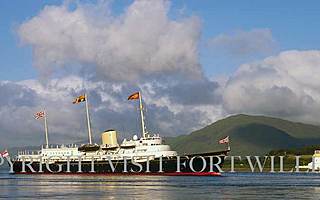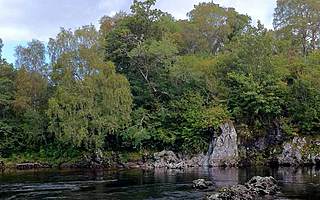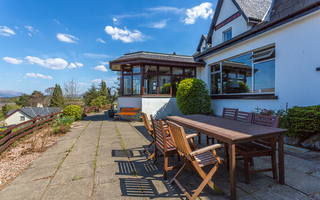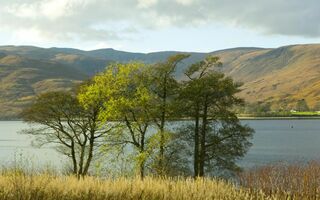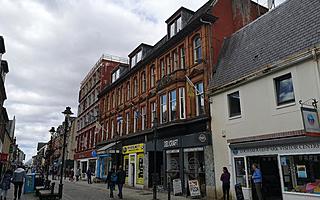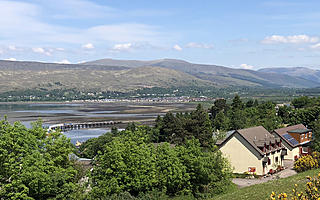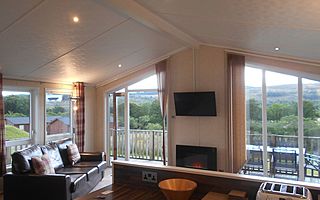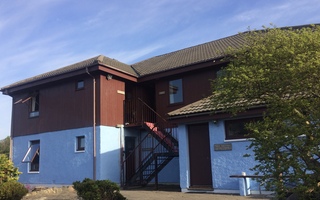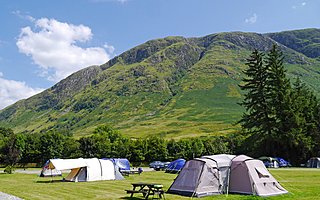Chronology of Fort William's history
A chronological history of Fort William's past
| Year | Event | Detail
| 7,500 BC |First evidence of human settlement in Scotland at Kinloch, Isle of Rhum in Lochaber.
| 3,000 BC | | Recently discovered “Cup Marks” at Blarmafoldach suggest early territorial markings of agricultural settlement. Probable inhabited caves at Onich.
| 2,000 BC | | Burial Cists with urns containing charred human remains found especially around Onich and North Ballachulish. Standing Stone at Onich.
| 1,000BC | | Vitrified Fort in Glen Nevis at Dun Deardill
| 800AD | | Ballachulish Goddess
| 1270 | | (Old) Inverlochy Castle Built
| 1429-31 | Skirmish | 31 Royalists for King James defeated Alexander Lord of the Isles in Lochaber. In 1431 a rematch had Donald Balloch MacDonald (Alexander’s cousin) rout a royalist force led by the Earls of Mar and Caithness - the 1st Battlle of Inverlochy. ‘Tis said they delayed engaging in battle to finish a game of cards.
| 1645 | Battle | Second Battle of Inverlochy - Montrose’s army after a sustained overnight March takes Campbell forces by surprise and routs the Duke of Argyll’s army.
| 1654 |
| General Monk, Cromwell’s emissary sailed into Loch Linnhe and built a timber palisade, “The Fort of Inverlochy” to accommodate 250 troops. He anticipated his mission to check the Highland Clans (especially the Cameron’s) would not be brief and took provisions for two years
| 1690 | | The Fort of Inverlochy was strengthened with 20’ high stone walls, fifteen guns and barracks for a thousand men. It was then named Fort William after the King and the adjacent village which it had fawned became Maryburgh after Queen Mary. Some of the stone walls and the “Sally Port” remain to this day.
| 1692 | Glencoe | The final papers authorising the “Massacre of Glencoe” were signed in the Fort and sent a detachment of troops to the McIains of Glencoe. After receiving their hospitality the soldiers turned on them in the early hours of a snow bound winters night, killing men, women and children. The wood panelled room in which the papers were signed is now reconstructed in the West Highland Museum.
| 1722 | Mining | Lead mine opened at Strontian. Later that century a new mineral Strontianite was discovered and the new element named appropriately Strontium was identified in 1793.
| 1725 | Road building | General Wade began building his great roads in the Highlands “to civilise the country”. The road from Fort William to Inverness crosses the River Spean above a deep rocky gorge at “ Highbridge”, completed in 1736. The pillars are still standing. Here a skirmish took place in 1745 heralding the Jacobite uprising of that year.
| 1745 | The Jacobites | Charles Edward Stewart (Bonnie Prince Charlie) raises his Standard at Glenfinnan and takes his Jacobite army to Edinburgh, Carlisle and then on to Derby in an attempt to take back the British Throne for the Stewarts.
| 1746 | A Siege | Siege of Fort William. The 1,500 strong Jacobite army with 200 French Artillery men laid siege to the Fort for 5 weeks, but failed. A sign of things to come - ending in the fateful day on the Moor of Culloden when the Highland Army were defeated. Charles goes into hiding spending many months being pursued by Redcoats. Cumberland “The Butcher” ravages Lochaber after Culloden.
| 1750s | Rebuilding | Town of Maryburgh rebuilt in wood (in case of further insurrection when it could be torched quickly.
| 1752 | Murder | The Appin Murder
| 1803 | Engineering | Construction of the Caledonian Canal begun designed and built by Thomas Telford.
| 1818 | | First boats pass through the Caledonian Canal.
| 1822 | | Caledonian Canal officially opened
| 1825 | Whisky | Long John” MacDonald’s distillery opened producing “Long John’s dew of Ben Nevis. Still making whisky and has a Visitor Centre. Free dram!
| 1830s | Tourism | Many Tourism begins in the Highlands with the advent of regular swift Steamboats. The “Lochiel Arms Hotel” (later Banavie Hotel) built beside the Caledonian Canal for Tourists.
| 1840s | | Fort William lit with oil lamps
| 1843 | | “The Disruption” of the Church of Scotland. The breakaway “Free Church” was not recognised by local lairds, Ministers were banned from their Churches and use of land for services was forbidden. Services were held in graveyards and in Strontian a “Floating Church” on Loch Sunart allowed the minister to preach afloat whilst the congregation stood on the shore below the high tide line.
| 1847 | Royal Visit | Queen Victoria arrived at Fort William en route to Ardverike “house hunting”. It rained heavily. She may not have been amused. Instead of buying Ardverike on Loch Laggan side; she went eastwards and bought the Balmoral Estate instead. It is drier there!
| 1849 | Highland Famine | The Highland famine at its height due to potato blight which decimated the staple food source. More emigration resulted.
| 1852 | Dr.William Kennedy dies | Dr. Kennedy, local doctor, dies in an outbreak of Typhus. Memorial built in Cameron Square.
| 1860 | "New" Inverlochy Castle built | Construction of Lord Abingers “New” Inverlochy Castle began at Torlundy.
| 1861-1865 | |
| 1864 | Belford Hospital opens | Belford Hospital opened. Built by Andrew Belford of Glenfintaig after the death of a Shepherd's wife in childbirth on his estate.
| 1873 | Queen Victoria stays in Fort William | Queen Victoria spent a week at Inverlochy Castle visiting Glenfinnan, Achnacarry and Glencoe Weather mixed!
| 1879 | |
| 1881 | Clement Wragge climbs Ben Nevis daily | Clement Wragge climbed Ben Nevis daily each summer daily for two years to make meteorological recordings and establish a need for an Observatory on the Summit.
| 1883 | Ben Nevis Observatory opened | A bridle path to take ponies to the top of Ben Nevis constructed and an observatory opened which took daily recordings on Britain’s highest summit for 21 years.
| 1886 | |
| 1890 | |
| 1891 | |
| 1894 | West Highland Railway opened | The West Highland Railway opened to traffic; its terminus Fort William became the focal point of the town. MacBrayne’s steamers landed on the pier (now occupied by “Crannog” the sea food Restaurant) a stones throw from the old station.
| 1895 | First Ben Nevis Race | William Swan, local hairdresser runs up and down Ben Nevis in 2hrs.41m.
| 1896 | Fort William Hydro Power | The Fort William Electric Lighting Company taps the Kiachnish river with a Hydro scheme and sees Fort William as the first town in Britain to be lit by electricity.
| 1900 | |
| 1902 | |
| 1904 | Ben Nevis Observatory | Ben Nevis Observatory closes but “hotel” on the summit remains open until the first world War
|
| |
| |
| 1909 | Kinlochleven Aluminium Smelter opened.(B.A.) | Blackwater dam constructed by teams of Navvies as recorded by Patrick MacGill in his "Children of the Dead End"
| 1911 | Ford Car ascends Ben Nevis | Ascent of Ben Nevis by Sir Henry Alexander in a Model “T” Ford!
| 1912 | |
| 1914 | |
| 1915 | |
| 1918 | |
| 1923 | West Highland Museum opened | The West Highland Museum opened in Cameron Square. Its recent refurbishment shows off to advantage its local and especially Jacobite collection which is of International Importance.
| 1926 | |
| 1928 | |
| 1929 | Fort William Aluminium Smelter opened.(B.A.) | The British Aluminium factory opens after five years of construction. Its Aluminium smelter is powered by a Hydro scheme tapping water from a vast area of the Lochaber & Badenoch. A tunnel 15ft in diameter,15 miles long and 200ft below ground was driven through the hillside of the Ben Nevis Range to carry water from Loch Treig to the factory’s power house.
| 1930 | |
| 1934 | |
| 1935 | |
| 1938 | Scottish Six day trials | Scottish Six day motorbike trials first centered on Fort William
| 1939 | |
| 1940 | Wartime in Lochaber | The outbreak of War changes Lochaber into a major centre for servicing Atlantic Convoys and a training ground for Commandos (headquarters at Achnacarry Castle) and for Motor Torpedo Boats. In December a bomb penetrated the power house at the factory but did not explode - it had been sabotaged during it's construction in Germany.
| 1941 | |
| 1945 | |
| 1948 | |
| 1949 | |
| 1950 | |
| 1951 | Ben Nevis Race restarted | Modern Series of the Ben Nevis Race begins.
| 1952 | Commando Memorial unveiled | The Commando Memorial unveiled by the Queen on a prominent site above Spean Bridge on the A82. This striking bronze by Scott Sutherland commemorates the Commando’s killed in the Second World War most of whom were trained hereabouts.
| 1953 | |
| 1955 | First female to run Ben Nevis Race | Kathleen Connochie aged 16, (now Mrs Kathleen Macpherson), completed the Ben Nevis Race as first female, and was featured in Guinness Book of World Records for around 30 years. Until this point no female had completed the race. The Amateur Athletic Association had to amend their rules, as they had not permitted any female to run this race. This resulted in female athletes being given equal status and allowed to run in athletic events like the marathon.
| 1962 | |
| 1963 | |
| 1964 | Pulp Mill opened | The Scottish Pulp and Paper Mill company open an vast industrial site at Annat utilising the local resources of water and wood. This brings a major influx of population with new housing, shops and amenities.
| 1965 | New Belford Hospital opens | The New Belford Hospital built to accommodate the increase population and expectations of modern medicine and surgery.
| 1967 | |
| 1969 | |
| 1974 | Town bypassed | A town by-pass was built on piers in the Loch to take traffic away from the congested main street. The station was relocated and a roundabout built adjacent to the remains of the Old Fort.
| 1975 | Ballachulish Bridge | Ballachulish Ferry no more as the bridge is opened
| 1975 | Town Hall burnt down | The “Old Town Hall” burnt down in December when being used by the Royal Mail to sort the Christmas Post.
| 1980 | Salmon Farming develops | Commercial Salmon farming becoming more important with fish pens on many sea ands Fresh water lochs. A processing factory on the “Blar Mhor” can dispatch up to 200 tons of fresh Salmon daily and all within 24 hours of harvesting.
| 1981 | |
| 1986 | |
| 1988 | Lochy Estuary reclaimed | Reclaimed land beside the old estuary of the River Nevis was developed with a large hall and leisure centre and Safeways supermarket.
| 1989 | Nevis Range opened | Skiing on Aonach Mor opened December 1989 with Gondola and chair lifts.
| 1994 | Nevis Radio | Nevis Radio started broadcasting 24 hours a day!
| 1995 | |
| 1996 | |
| 1997 | Longest "Strip the Willow" in the West! | The West Highland Museum celebrates its 75th Anniversary with 3,000 people in the High Street to see and dance “The Longest Strip the Willow in the West” . The dancers stretched 250 yards from the Grand Hotel to beyond St.Andrews church
| 1999 | |
| 2000 | Last "Strip the Willow" of the Century | Fort William celebrated the Millennium with the last "Strip the Willow" of the Century with 7,000 gathered from the Grand Hotel to Nevisport; followed by a fine firework display.
| 2001 | Mountain Biking World Cup | Mountain Biking World Cup held for the first time in Fort William at Aonach Mhor
| 2004 | |
| 2005 | Support the Belford Public Meeting | 2,800 attended a Meeting at the Nevis Centre where conclusions of the West Highland Project were to be delivered. The audience vociferously rejected the proposals which derailed the Health Boards plans and led to national acceptance of the locally conceived "Rural General Hospital" model.
| 2007 | Mountain Biking World Championship Aonach Mhor | Mountain Biking World Championship Fort William
| 2008 | Pulp Mill demolished | The Tower of the Pulp Mill blown up to assist demolition
| | |
